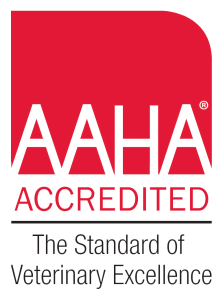How to Choose the Best Food for Your Cat

One of the most common questions we are asked is “What should I feed my pet?” Since the most important contribution you can make to your pet’s health and well-being is his or her daily diet, it’s a question that deserves a good answer.
Think Quality Food for Your Cat! Don’t Switch Foods!
Diet is extremely important for growth, and there are two important criteria that should be met in selecting food for your kitten. We recommend a NAME-BRAND FOOD made by a national cat food company (not a generic brand), and a form of food MADE FOR KITTENS. This should be fed until your kitten is about twelve months of age. We recommend that you only buy food that has been certified by an independent organization as complete and balanced. In the United States, you should look for food that has been certified by AAFCO, an independent organization that oversees the entire pet food industry. It does not endorse any particular food, but it will certify that the food has met the minimum requirements for nutrition. In Canada, look for foods approved by the Canadian Veterinary Medical Association (CVMA).
Dry Cat Food vs. Canned and Semi-Moist Formulations
Cat foods are available in dry, canned, and semi-moist formulations. Any of these formulations is acceptable, as long as the label states that the food is intended for growth (or is a kitten food), and is “complete and balanced”. This means that the food is nutritionally complete to meet the needs of growth and development. Each of the types of food has advantages and disadvantages.
Dry Food
Dry food is definitely the most inexpensive and can be left in the cat’s bowl at all times. If given the choice, the average cat will eat a mouthful of food about 12-20 times per day. The good brands of dry food are just as nutritious as the other forms.
Semi-Moist Food
Semi-moist foods may be acceptable, depending on their quality. The texture may be more appealing to some cats, and they often have a stronger odor and flavor. However, semi-moist foods are usually high in sugar, and if they are fed exclusively, can cause the cat to develop a very finicky appetite. They are also inappropriate for cats with diabetes or at risk of diabetes. We do not generally recommend this type of food.
Canned Food
Canned foods are a good choice to feed your kitten, but are considerably more expensive than either of the other forms of food. Canned foods contain a high percentage of water, and their texture, odor, and taste are very appealing to most cats. However, canned food will dry out or spoil if left out for prolonged periods of time; it is more suitable for meal feeding rather than free-choice feeding.
Table Food
Table foods are not recommended. Because they are generally very tasty, cats will often begin to hold out for these and not eat their well-balanced cat food. If you choose to give your kitten table food, be sure that at least 90% of its diet is good quality commercial kitten food. We enjoy a variety of things to eat in our diet. However, most cats actually prefer not to change from one food to another unless they are trained to do so by the way you feed them. Do not feel guilty if your cat is happy to just eat one food day after day, week after week.


